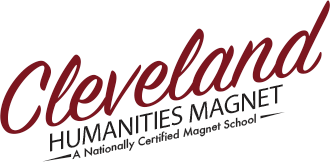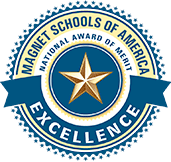10th Grade Art History
Unit 1: Study of Virtue in The Ancient Greek Culture
Specific Topics
- Development of art from Dark Ages of Greece to Hellenistic Greek and Etruscan periods.
- Kinds of art: painting ceramics, bronze and marble sculptures, architecture, fashion, mosaics
- Evolving representation of the human form in art. Changing ideals and virtues of the culture that is creating the art. Effects of history on art production and narratives depicted.
Essential Questions
- Can perfection be reached?
- How does one represent balance and harmony visually?
- Which is more important – rationality or aesthetics?
- Where did the “culture of youth” originate?
Student Understandings
- Greek use of math to explain harmony and perfection
- The role of humans in the universe
- That “ideals” change over time
- Physical and intellectual moderation as the ideal
Readings & Materials
- Gardner’s Art Across the Ages
- Getty.edu
- lacma.org
- smarthistory.org
Unit 2: The Rise of Christianity
Specific Topics
- Republican Rome and its Leaders
- Augustus, Julius Caesar, Constantine
- The shift from polytheistic representations in art to monotheistic representations in art
- Life of Jesus in visual art
- Influence of Jewish art on Christian visualizations
Essential Questions
- How did the Roman leaders use art to promote their own legacy?
- How did the image of Jesus change from “good shepherd” to “king of heaven”?
- What is the role of Christian women in the “cult” of Mary?
Student Understandings
- How Greek gods transformed into Christian saints
- How Roman leaders appropriated Greek imagery to represent their own glory as “ideal men”
- Relationship between Judaism and Christianity, specifically found in architecture and catacombs
- Monotheistic values of faith, suffering and sacrifice
Readings & Materials
- Gardners’ Art Across the Ages
- Getty.edu
- lacma.org
- skirball.org
Unit 3: The Bloody History of the Catholic Church
Specific Topics
- Early Christian Churches
- Romanesque Churches
- Gothic Cathedrals
- Islamic Art and Architecture
- The Renaissance
- The Italian and Dutch Baroque
- Mannerism
- Latin American Art of the 15th century
Essential Questions
- How does architecture reflect the view of the world of the 10-14th century?
- When science and math is introduced into the making of art during the Renaissance, how do painters change their style and way of depicting the world?
- How does art change as the patron changes?
Student Understandings
- How reflective art is to the events of its time
- The shift that occurs during the Renaissance from focusing on God to focusing on the human, the individual
- The artists role in historical social changes
Readings & Materials
- Gardners’ Art Across the Ages
- lacma.org
Unit 4: The Romantics & The Victorians
Specific Topics
- Cautionary tale of what happens when the scientific revolution is taken too far.
- The “God Complex” of Faustus taken a step further with Victor Frankenstein.
- The Romanticism of Rousseau seen in Shelley as well as the poets of the era.
- Mindset of the Romantics attempting to warn regarding the Industrial Revolution
- Mindset of the Victorians looking at the benefits as well as the detriments of the Urban locale.
- Class relations studied in depth.
Essential Questions
- How has the Industrial Revolution affected our relationship with the natural world?
- How is our perception of God changed?
- How has the Scientific Revolution changed our pursuit of the possible?
- How does the literature of the time reflect the thinking of philosophers?
- What social role and responsibility is (or should be) taken on by the bourgeois class?
- How is the Proletariat treated by other classes?
Student Understandings
- The conflict of “innocence versus experience,” and what both mindsets have to offer human beings
- Why certain spiritual issues ought not be controlled by humankind
- The impracticality of “moving backwards” in reaction to the Industrial Revolution
- The tension established between the classes within the urban location
- The capacity of the society at large to be either beautifully benevolent or hideously cruel to a member based solely on appearance
- The class system of post-revolutionary France as a case study of what was going on in Europe during the 1800s
- The connection between the Art Pieces of the era as representative of the literary characters
Readings & Materials
- Selected Poems from:
- William Blake
- Oscar Wilde
- Thomas Hardy
- “Frankenstein” by Mary Shelley
- William Wordsworth
- A.E. Housman
- Excerpts from “Les Miserables” by Victor Hugo


